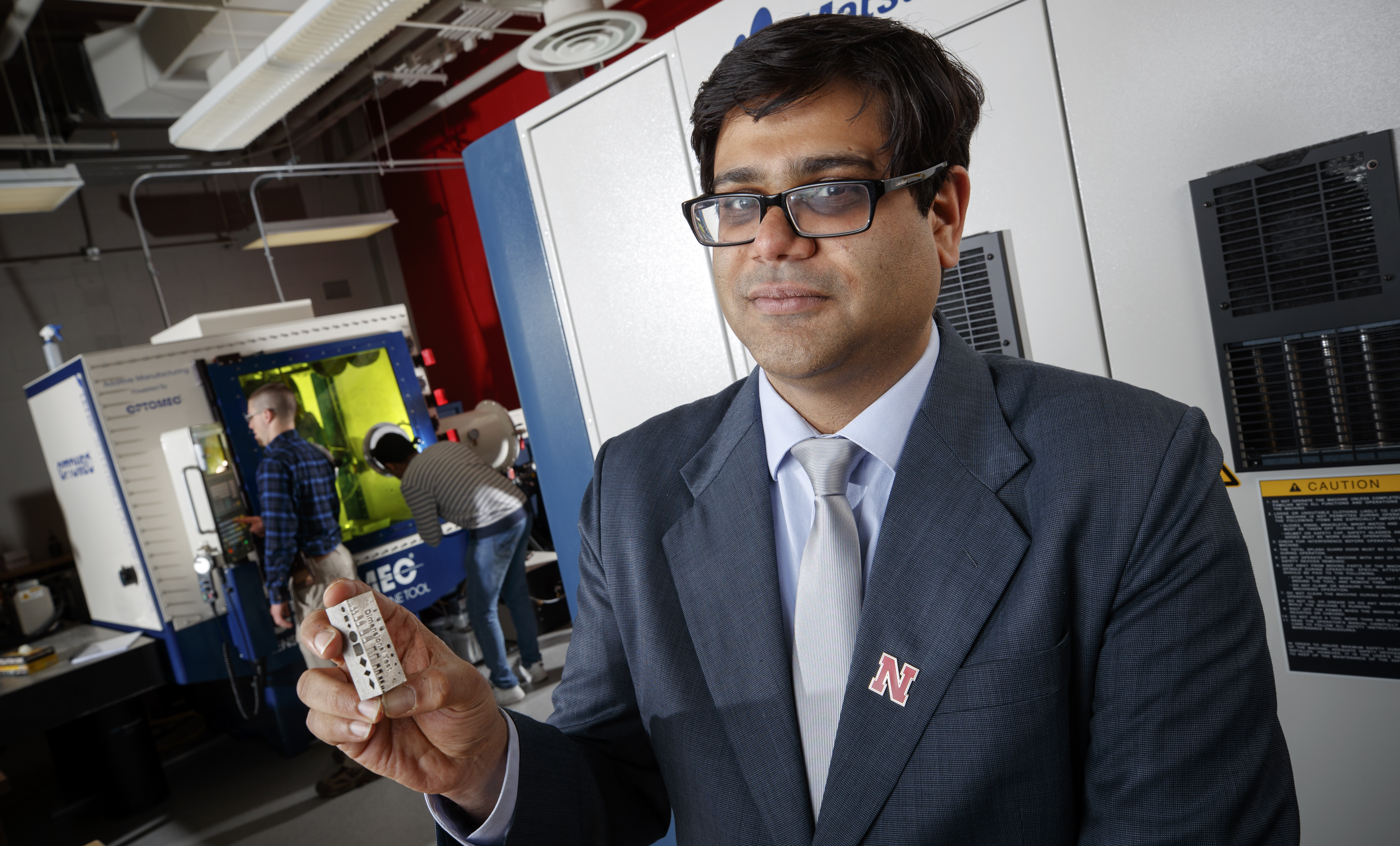
University of Nebraska–Lincoln engineer Prahalada Rao has high expectations for 3-D printing: no less than revolutionizing the world, in fact. Before that can happen, the process — already used to create many items from toys to car parts — must overcome a tendency to create flaws in the final product.
“People call it ‘print and go’; I call it ‘print and pray,’” said Rao, assistant professor of mechanical and materials engineering.
Three-dimensional printing transforms designs into parts more quickly and with less waste and expense than current technology. But its significant failure rate makes it infeasible to mass-produce airplane turbines or replacement knees, for example, where safety is paramount, he said. Using X-ray scans to ensure the final product is free of defects is time-consuming, expensive and limited by size.
Rao earned a five-year, $500,000 Faculty Early Career Development Program award from the National Science Foundation to develop a 3-D printing process, officially known as smart additive manufacturing, that produces flawless metal parts every time.
Additive manufacturing is adept at sculpting many different types of materials, such as plastics and titanium, into highly complex 3-D shapes using less material than conventional technology. Three-dimensional printing works by layering materials that are fused together through processes such as melting plastic or hitting metallic layers with a laser. However, flaws, such as holes or other malformations, can develop.
Rao works with metal, such as titanium. He’s developing algorithms that detect flaws while the printing is taking place. The process also identifies the type of flaw and enables the printer to correct it automatically.
Rao likened it to building a brick house. His process will detect a loose or weak brick while the house is being constructed, remove the brick and replace it before construction continues.
The technique requires attaching many types of sensors to a specialized hybrid 3-D printer that can both add and subtract material.
“It’s a ‘big data’ problem,” Rao said. “You’ve got so many sensors. The trick is how do you use all of that data you’re collecting to pinpoint when and where an error occurs and then correct as you build.”
To aid additive manufacturing research such as Rao’s, Nebraska has invested in three hybrid 3-D printers with capabilities unique to the university. They will become part of the Nebraska Engineering Additive Technology Labs, or NEAT Labs, scheduled to open in May.
If successful, Rao’s technique could be used to quickly produce complex metallic components across a wide variety of industries. For example, his technique could be used to print replacement knees specific to each patient, rather than modifying off-the-shelf components as is done today. The military could one day 3-D print a replacement part for a tank engine and send it back into service within minutes.
Rao’s award will also help educate a new generation of materials engineers using modern, hands-on teaching techniques. He’s developing an undergraduate course in additive manufacturing that will allow students to maximize time in the laboratory.
He’s also partnered with the Navajo Technical University in Crownpoint, New Mexico, to develop an eight-week summer camp for Native American students from across the United States to come to Nebraska and learn about 3-D printing.
“Nebraska is positioning itself as a hub for additive manufacturing in a variety of industries, including agricultural equipment, manufacturing and biomedical,” Rao said. “If this research is successful, it will have a huge impact on how quickly and reliably we can turn around new products and designs, spurring innovation in Nebraska.”
The NSF grant, known as a CAREER award, supports pre-tenure faculty who exemplify the role of teacher-scholars through outstanding research, excellent education and the integration of education and research.










